Ashley’s place on the sofa is no longer in the sun. #dogsofmastodon 🐕 Although it may look like Ashley spends all her time lounging on the sofa, in fact she has had three walks since the previous photo.
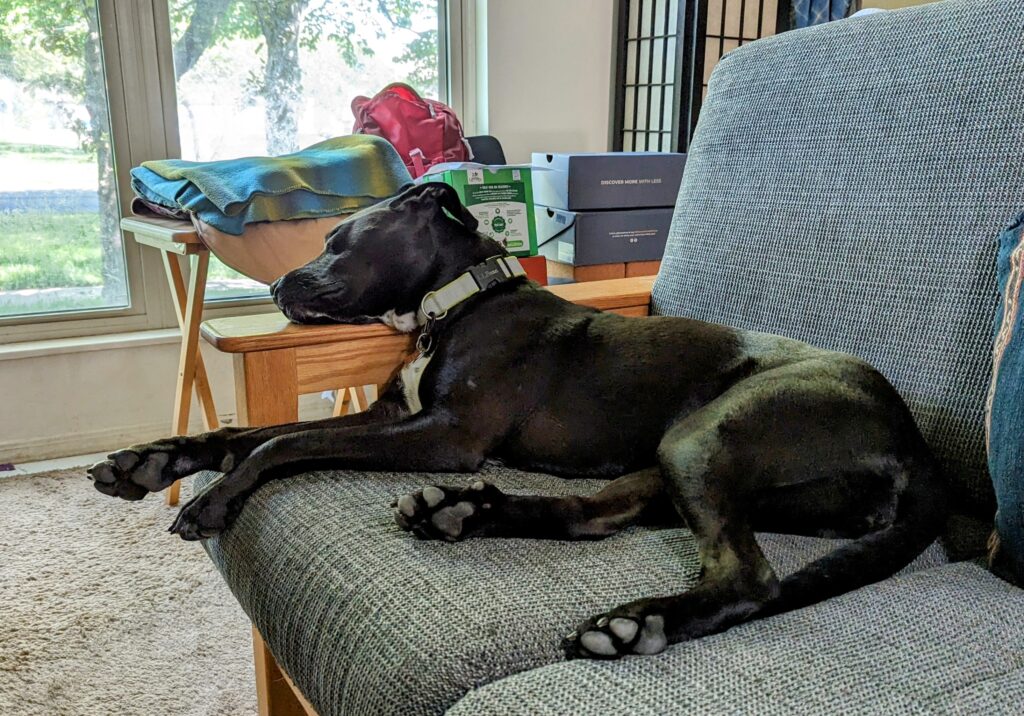

Ashley’s place on the sofa is no longer in the sun. #dogsofmastodon 🐕 Although it may look like Ashley spends all her time lounging on the sofa, in fact she has had three walks since the previous photo.

Ashley’s place on the sofa is also her place in the sun. #dogsofmastodon 🐕

A Manhattan for Jackie. “I’m only in it for the cherries,” says she.
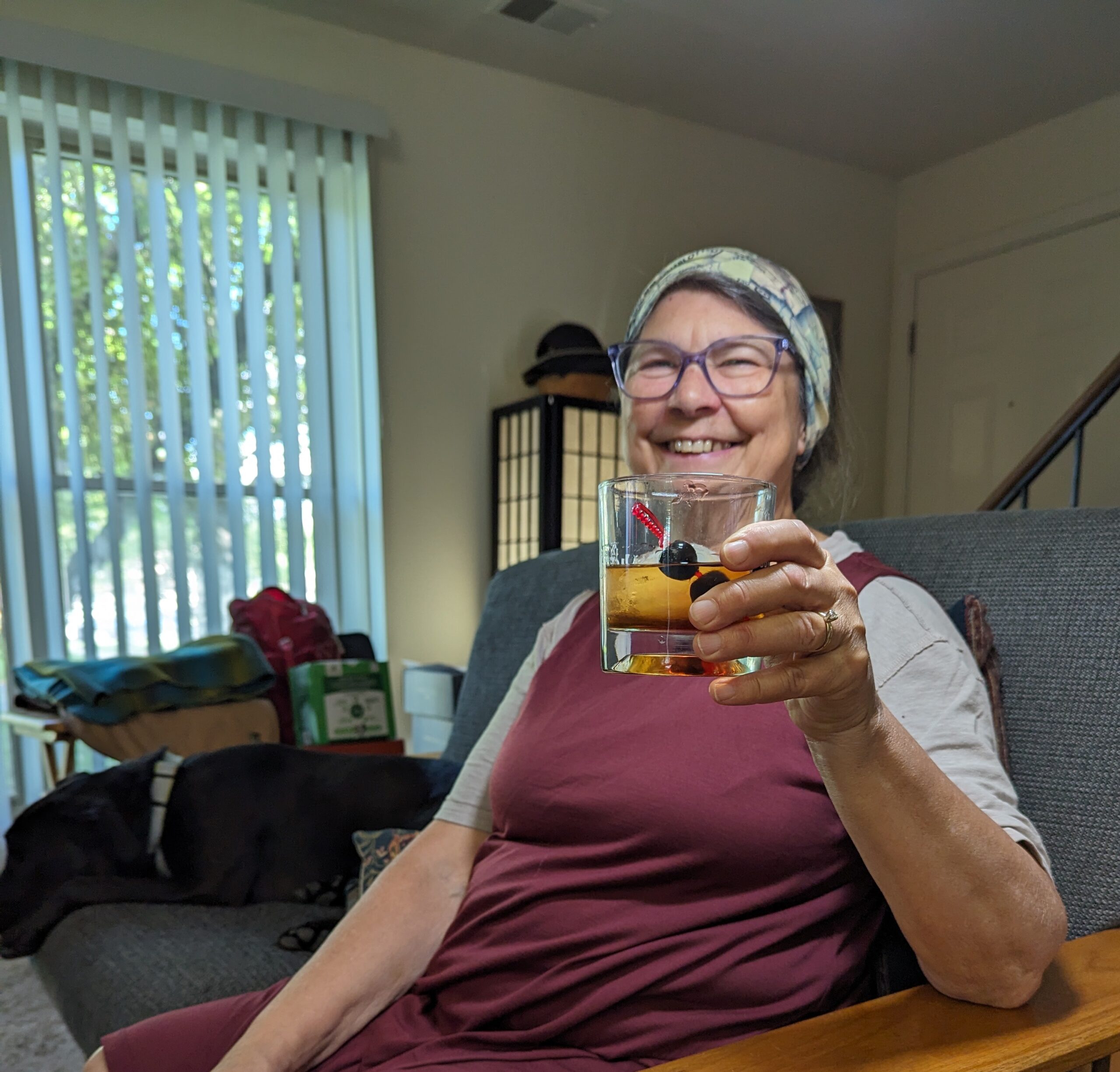
Today was a rest day, but yesterday I did three rounds on my rings:
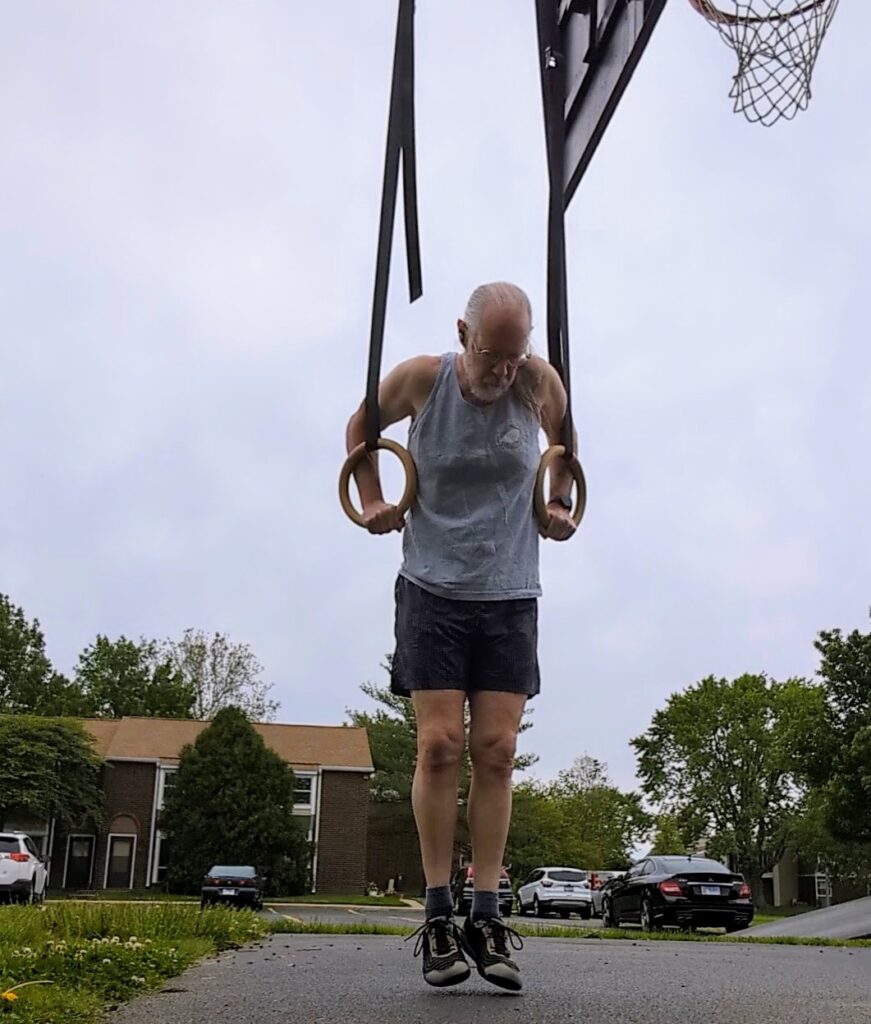
Jackie and I took Ashley to Homer Lake and walked the West Lake Trail. #dogsofmastodon 🐕 🥾
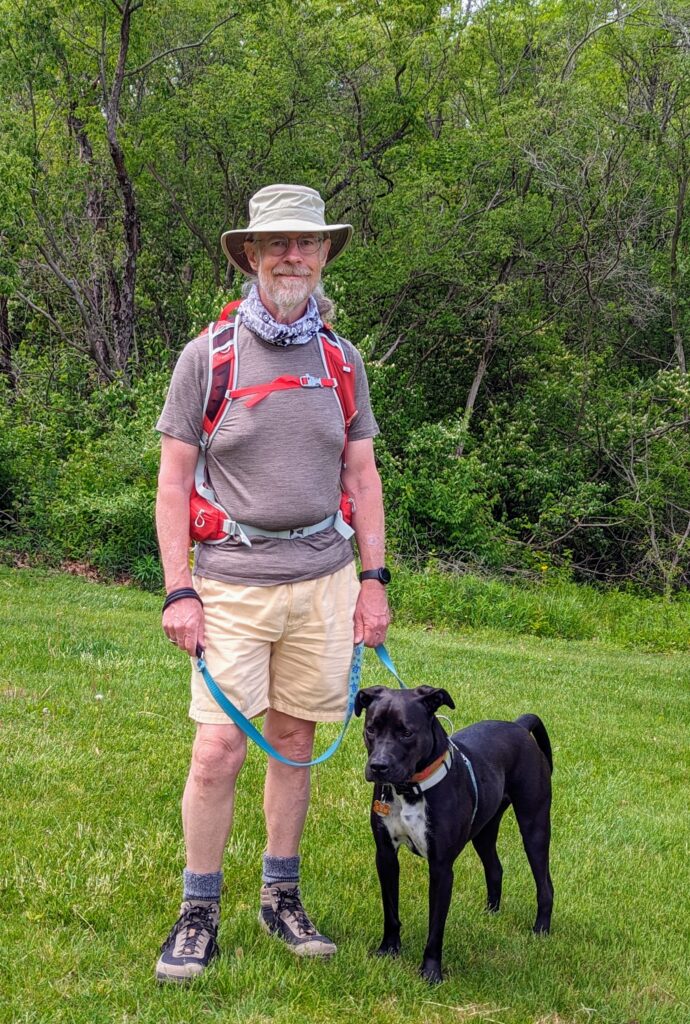
Back in 2020 I bought a set of gymnastic rings, and used them for pull ups, dips, and inverted rows during the period that fitness rooms were closed due to the pandemic. More recently, I’ve been doing a lot of club and kettlebell swinging—using equipment that was unavailable during the pandemic, but that I’ve purchased since.
I like the club and kettlebell stuff. However, probably because I’m not programming the workouts as well as I might, I don’t seem to be making progress. In fact, in some ways I’m backsliding. So, now that the weather supports getting outdoors and putting my rings up again, I’m going to do more of those workouts.
Today I did a circuit with three rounds of:
This picture has nothing to do with my workout. I took it while walking the dog at dawn.
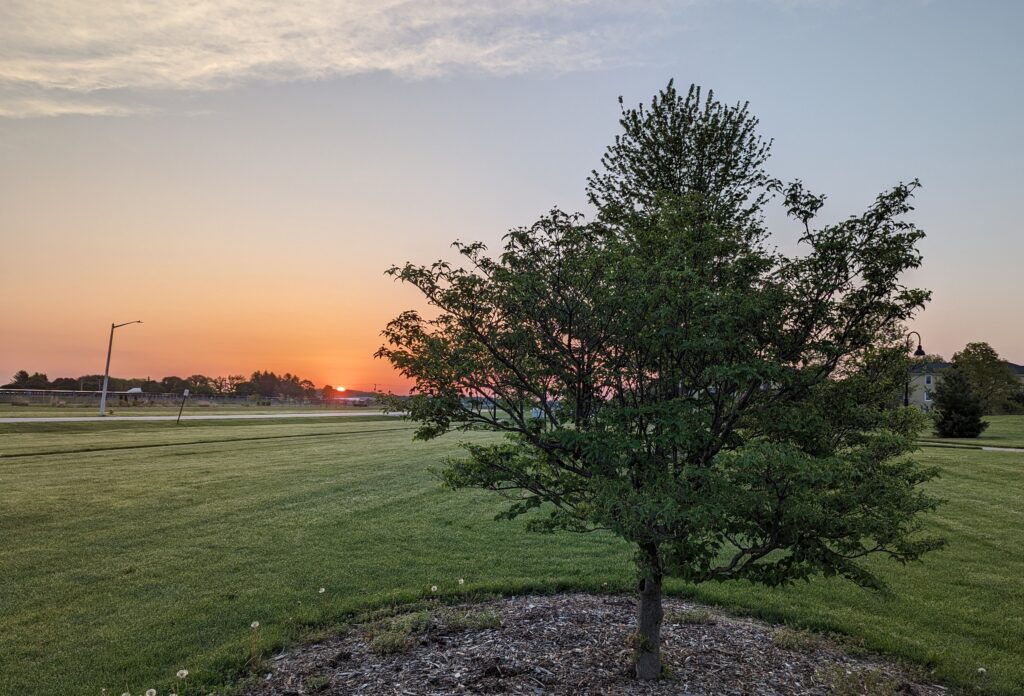
Today’s workout was hill sprints at Colbert Park. Did a few warmup sprints at 40% up to 80%, then 4 working sprints at 90–95%.
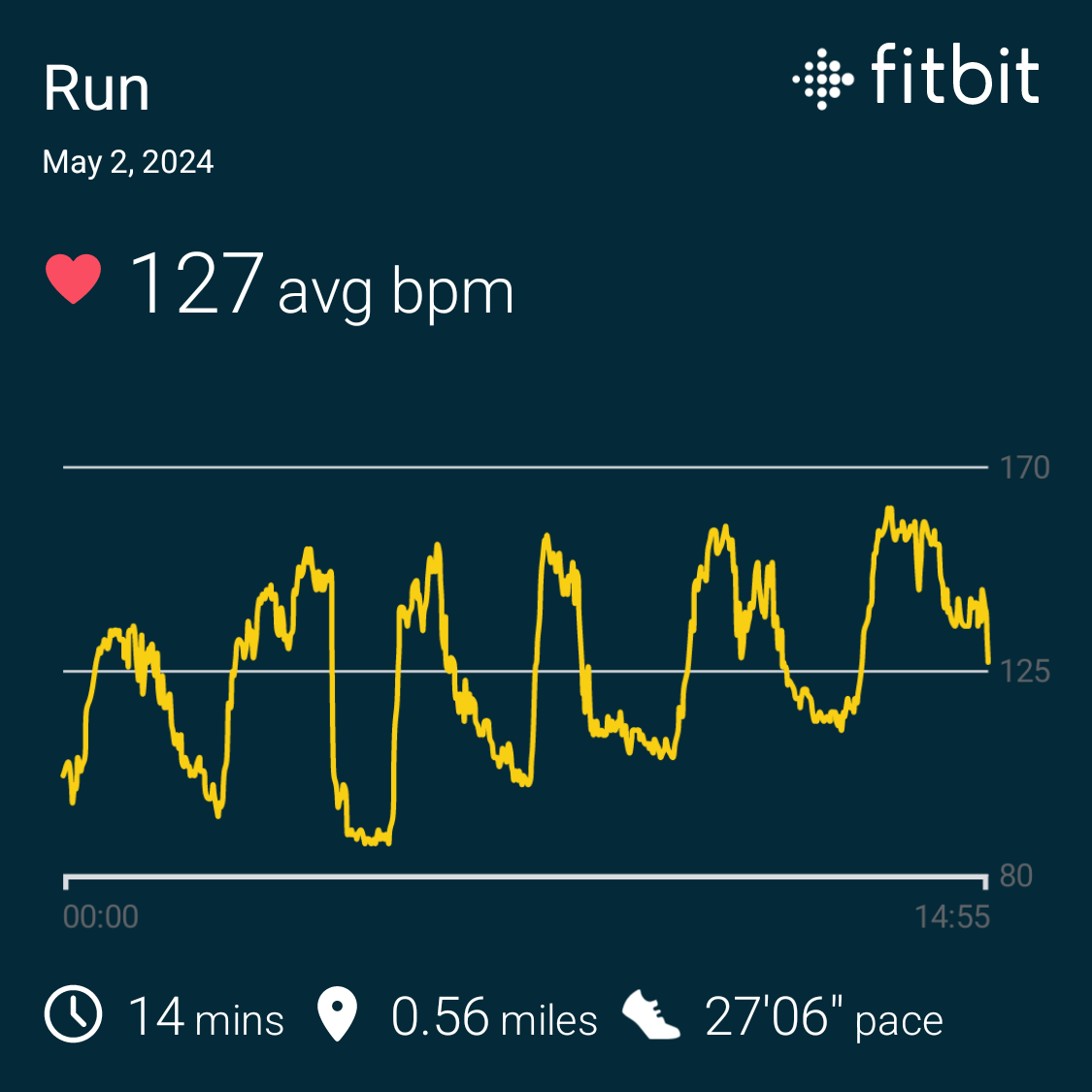

Broadly speaking, every walk you take is both preprandial and postprandial.

The closure of Blind Pig Brewing has left a gap on the shelves of the beer aisle in the grocery store which is being filled with other Illinois brewers. In the Cards is from Pollyanna Brewing Company, based in Lemont, Illinois (up towards Chicago). It’s an okay hazy APA, but lacking in distinctive hop flavors.
